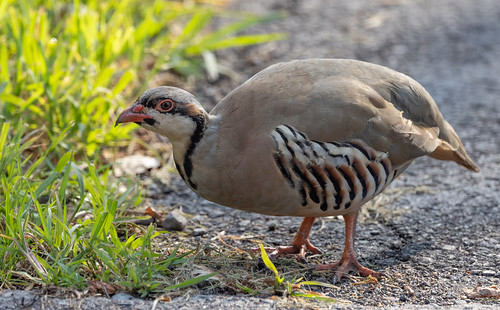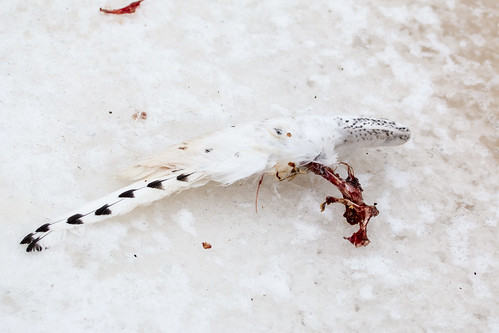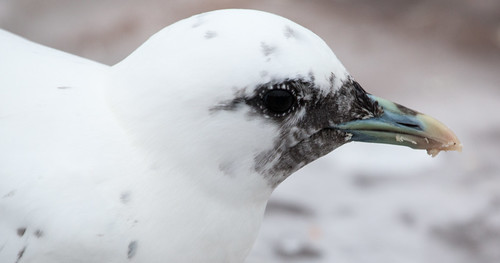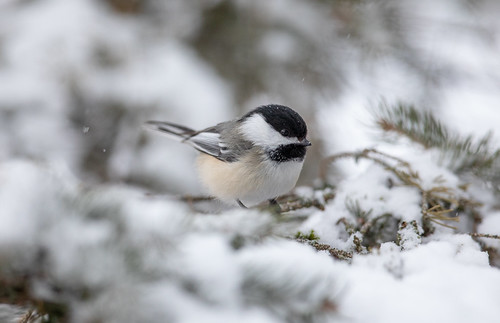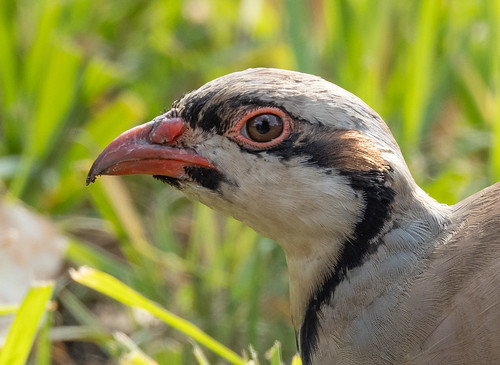On January 3, a birder named Sam Holcomb photographed an immature Ivory Gull at Park Point in Duluth—far and away the rarest bird to turn up here so far in 2022. When the word got out, birders were drawn to Canal Park and Park Point like iron filings to a magnet. I tried “chasing” it three times without luck, starting the morning after the original sighting. On January 9, Kim Eckert reported it near the ice fishing shacks on the bay side of the Park Point recreation area. I got the message and headed out a few hours later, but almost all the fishing shacks had been brought in. I hiked along the shore quite a way and thoroughly scanned the sky and ice, but didn't see anything more than Herring Gulls and Bald Eagles. On Wednesday the 12th, birders spotted it in Canal Park just before dark, so I went there at first light on the 13th and stuck around for over an hour, scanning every gull on the ice and flying about, but again no luck. As of Saturday the 15th, the sighting on Wednesday was the last, so I apparently won’t be adding that rarity to my 2022 list.
I don’t have the fire in my belly anymore to spend much effort trying to see birds I’ve already seen in the state and county. Oddly enough, I was way more acquisitive about the Chukars that turned up in my neighborhood last summer. They’d clearly escaped from a game farm or other captive situation and weren’t “countable” on any birding lists, but I badly wanted to see and photograph them.
Back in 2015, when an Ivory Gull was spending time in Quincy, Illinois, I went all the way down there with a birding friend, Tony Lau. We got skunked, which was disappointing because that bird would have been a lifer. But I was almost as happy to see a Eurasian Tree Sparrow. I'd seen plenty of them in St. Louis before that, but this was new for my Illinois list. I have much more of an affinity for songbirds—even non-native species—than I do for gulls.
The very next year, a very-easy-to-see Ivory Gull turned up in Duluth. I saw that 2016 bird multiple times without any trouble at all starting on New Year’s Day.
Then, in the evening on January 5, I received an email with a photo of the scattered, mangled pieces of an immature Ivory Gull—apparently torn apart by a predator or scavenger—found late that afternoon in Superior. First thing the next morning I retrieved the carcass—that poor thing ended up at the Field Museum of Natural History in Chicago, where scientists preserved the parts and retrieved both a louse and a mite, parasites that are very hard to come by on this species, making the specimen particularly valuable for science.
Erik Bruhnke had come along with me to get the carcass, and on our way back to Duluth, he got several text messages saying the Ivory Gull was very much alive, being observed at Canal Park right that very moment. Incredibly, there hadn’t been just one of this rare gull in the harbor area—there’d been two! Right when we got to Canal Park and I was looking straight at the live one, Sam Cook from the Duluth News Tribune phoned, asking me about it. He quoted me in the article he wrote, leading to the one and only meme I've ever been featured in.
Sadly, that most cooperative bird appeared to be in distress on January 23, and seemed even worse on the 24th. Rehabbers from Duluth’s Wildwoods tried to capture it, but it eluded them, and after that day, it was never seen again.
Ivory Gulls do not belong in Duluth, or Quincy, Illinois, or anywhere else in the Lower 48. The first specimen described for science was collected on a 1773 expedition to the North Pole. The species breeds in the high Arctic and has a circumpolar distribution through Greenland and northernmost North America and Eurasia. It hasn’t been observed at the North Pole but has been seen as far north as 88°N, about 130 miles from the North Pole, which is a shorter distance than between Duluth and the Twin Cities. The vast majority of the species breeds along the Arctic coastline in Russia. The Canadian population is declining horribly—about 80 percent between 1980 and the early 2000s; much less data is available about the Russian population. The decline in sea ice is a major cause of the species’ disappearance, along with illegal hunting.
The sad fate of both the 2016 Duluth Ivory Gulls may be the normal outcome of the poor individuals, mostly immatures, who wander so far out of their natural range. An individual Ross’s Gull, another far-northern species, turned up at the mouth of the St. Croix River this past November 27, allowing birders in both Wisconsin and Minnesota to see it, before it died on November 30. That’s another reason I wasn’t all that fired up to chase this year’s Ivory Gull. I can look out my window to see my day-to-day Pileated Woodpeckers, Red-bellied Woodpecker, and chickadees with some assurance that they’ll make it through the winter in excellent health.
Virtually every individual bird on my life list is dead by now, of course, but a few died within days, or even hours, of my seeing them. My lifer Barn Owl, on the grounds of the Lincoln Park Zoo in Chicago, died a few days after Russ and I saw it on December 23, 1978, and the only one I’ve ever seen in Minnesota, up in the bog on January 12, 2020, died just a few hours after Russ and I saw it.
Day by day, the Chukars in my neighborhood dwindled from a fairly sizable covey to none—probably serving as delicious meals for the neighborhood foxes.
But some of the birds that wander far from their normal range have a much better prognosis. People used to think that the Snowy Owls that came down to the Lower-48 in winter left the Arctic because they were starving, and that few ever made it back. But banding studies, some done right here in Duluth, established that quite a few individuals return year after year, and that many of them are in excellent health with plenty of meat on their bones.
We also know that individuals of another western species, the Rufous Hummingbird, spend entire winters in the east as far north as Ohio, Pennsylvania, and even Massachusetts, and some return in subsequent years.
Some birds that escape captivity end up thriving and establishing whole new populations, such as the Monk Parakeets in Chicago and New York City, many species of parrots in Florida, Texas, and California, and House Finches in eastern states.
So vagrancy, irregular migratory habits, and even escaping from captivity aren’t always an indication that what we think of as an out-of-range bird is in trouble. When I was a rehabber, quite a few birds I expected to die turned out to be pluckier and more resilient than I expected.
When they disappear, birds never send text messages to let us know how they are. There are so few records of Ivory Gulls in the Lower-48 that we really don’t have enough data to work out probabilities, and who among us has never tried, and occasionally succeeded, to beat the odds? Hope is indeed the thing with feathers that perches in the soul, so unless I find out differently, I’ll cling to the hope that the Ivory Gull who started out 2022 in Duluth is doing just fine wherever it may be.

